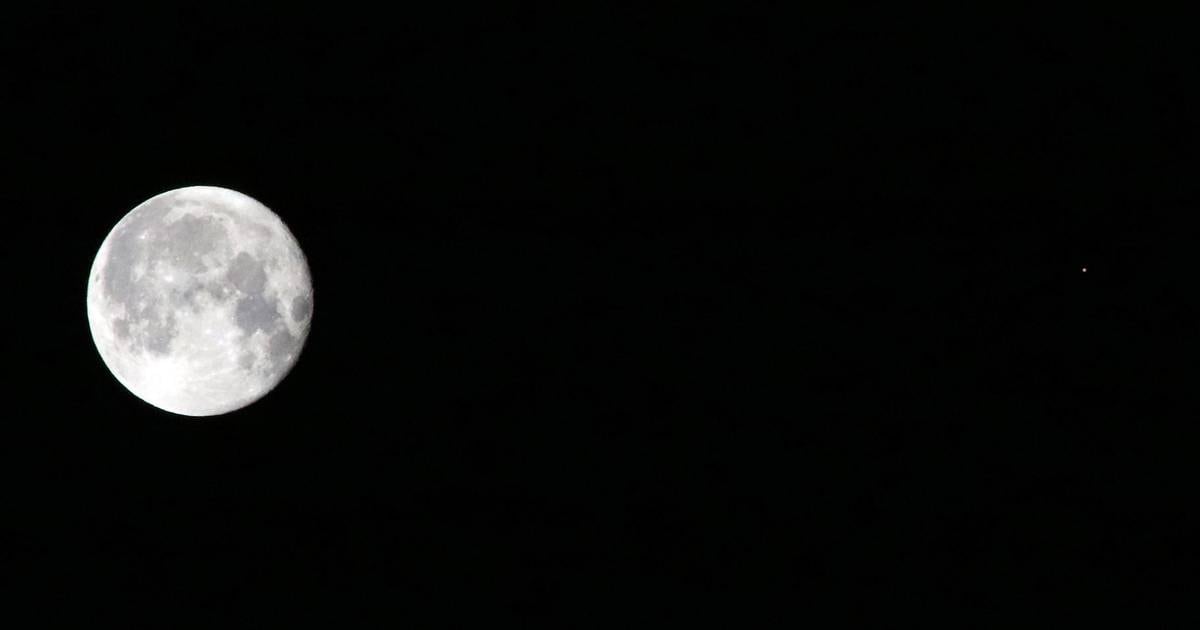China launched the first spacecraft to collect samples of the hidden side of the Moon and return them to Earthsolidifying the nation's position as the United States' main competitor in the race to establish a long-term presence on the lunar surface.
A rocket Long March-5 that transported Chang'e-6 unmanned aircraft took off from the Wenchang space launch site in the southern province of Hainan on Friday afternoon, state media reported.
Chang'e-6 will try to land inside the basin South Pole Aitken. Within 48 hours of landing, a robotic arm will begin collecting rocks and soil from the lunar surface and a drill will drill into the ground. The mission is expected to last about 53 days.
“First-hand direct samples of the far side of the Moon are essential to give us a deeper understanding of the characteristics and differences of the two sides of the Moon, and to reveal the secrets of the Moon,” he said. Zeng Xingguoa scientist at the National Astronomical Observatories of the Chinese Academy of Sciences, according to Xinhua News Agency.
“The entire mission is fraught with numerous challenges, and each step is interconnected and stressful,” Zeng said.
China in 2019 became the first and only country to land on the opposite side with the Chang'e-4. The following year, Chang'e-5 China returned samples from the near side of the Moon for the first time since the end of the program NASA Apollo in the early 1970s.
China seeks to send its first manned mission to the Moon before 2030
Beijing wants to send its first crewed mission to the Moon before 2030, and state media reported on April 24 that work is progressing “smoothly” toward that goal.
While the Apollo astronauts explored areas relatively close to the lunar equator, the south pole is the focus of the national space programs that seek to determine the existence of sufficient water ice deposits that would allow the production of fuel and oxygen. That could facilitate a long-term human presence on the Moon.
India landed its first lunar probe near the South Pole last August, shortly after the failure of a Russian spacecraft that was supposed to land in the area.
NASA is targeting the region for a mission to return American astronauts to the Moon, scheduled for 2026, and is working with companies such as Jeff Bezos' Blue Origin and Elon Musk's SpaceX.
In February, a spacecraft from Houston-based Intuitive Machines Inc. landed in the polar region with the goal of provide NASA with new information that could help the agency send astronauts to the area.
The United States is concerned that China may try to prevent others from accessing resources there, the NASA administrator said, Bill Nelsonto lawmakers at a congressional hearing on April 30.
“We believe there is water there, and if there is water, then there is rocket fuel,” he said. “And that's one of the reasons we're going to the south pole of the moon.”
China, which agreed in 2021 to cooperate with Russia on a base called International Lunar Research Station near the south pole, wants Chang'e-6 to help pave the way for construction of the station, according to Chinese state media.
A “basic version” of the ILRS “centered around the lunar south pole” will be completed by 2035, state media reported on April 25.

